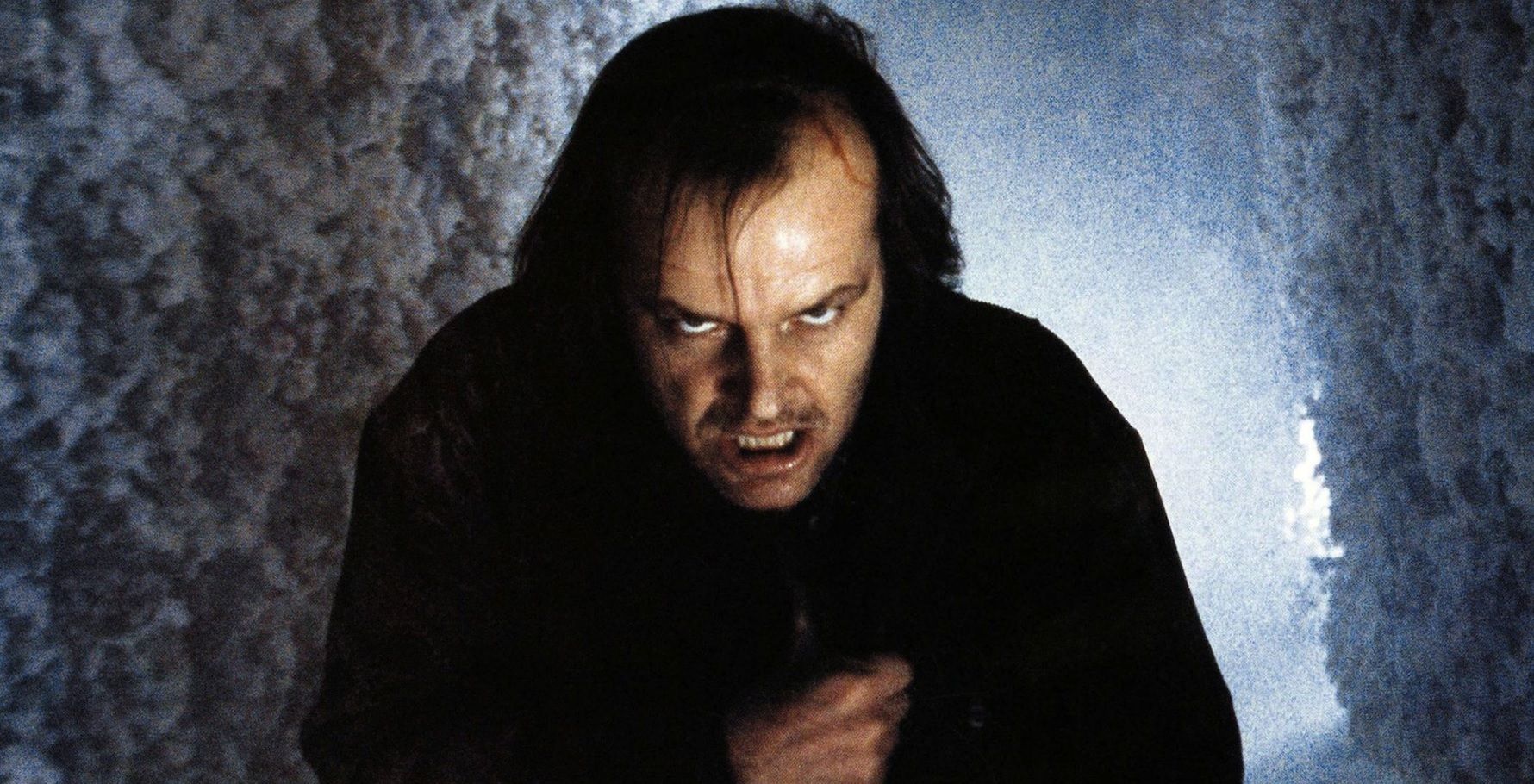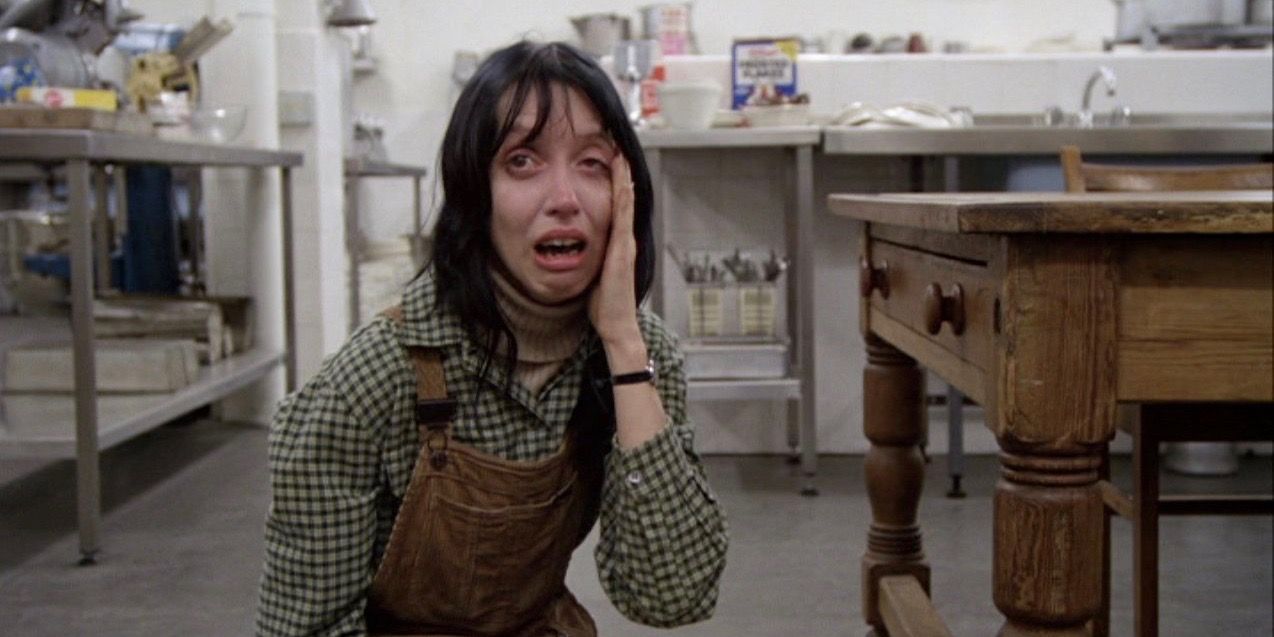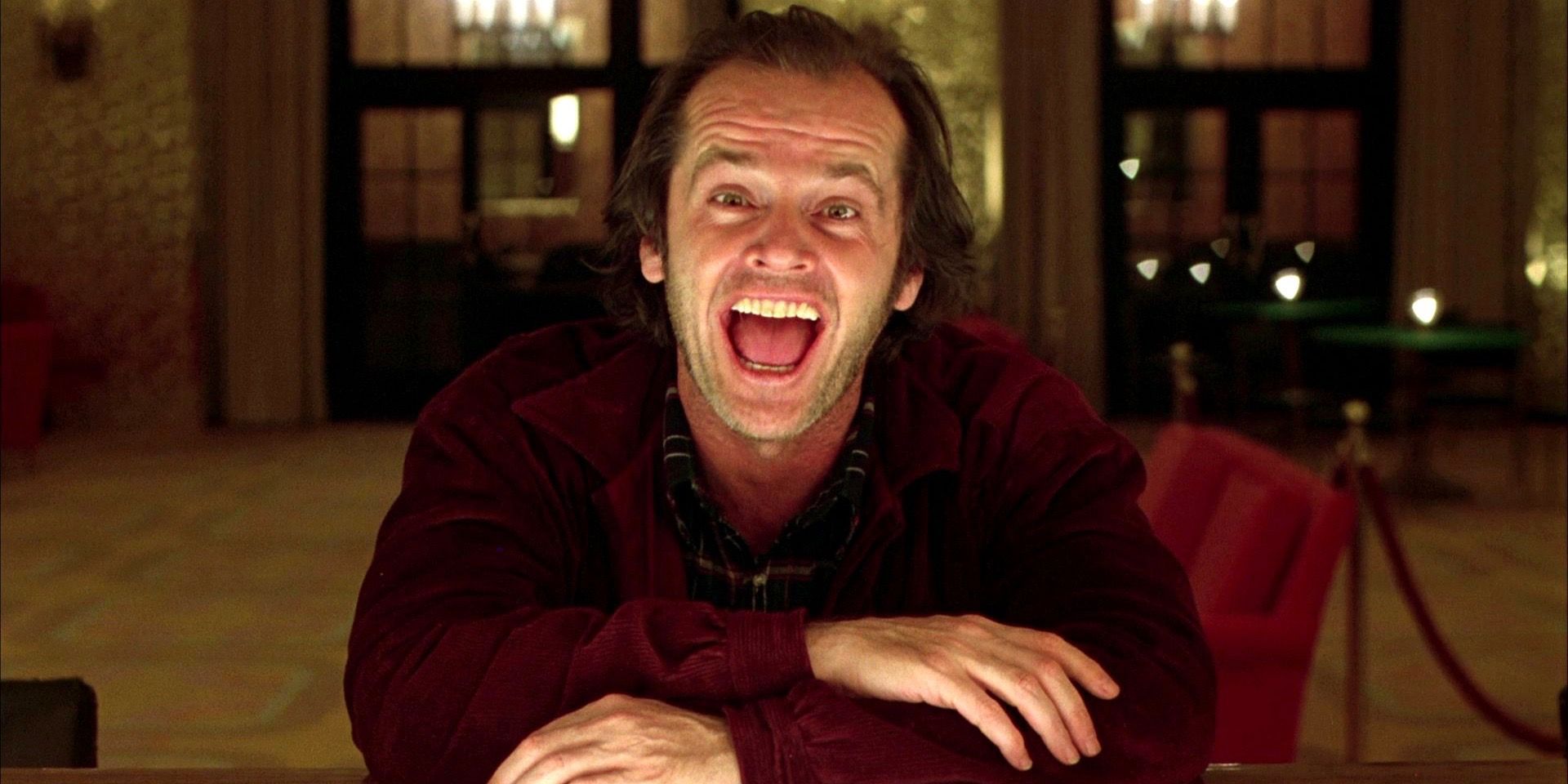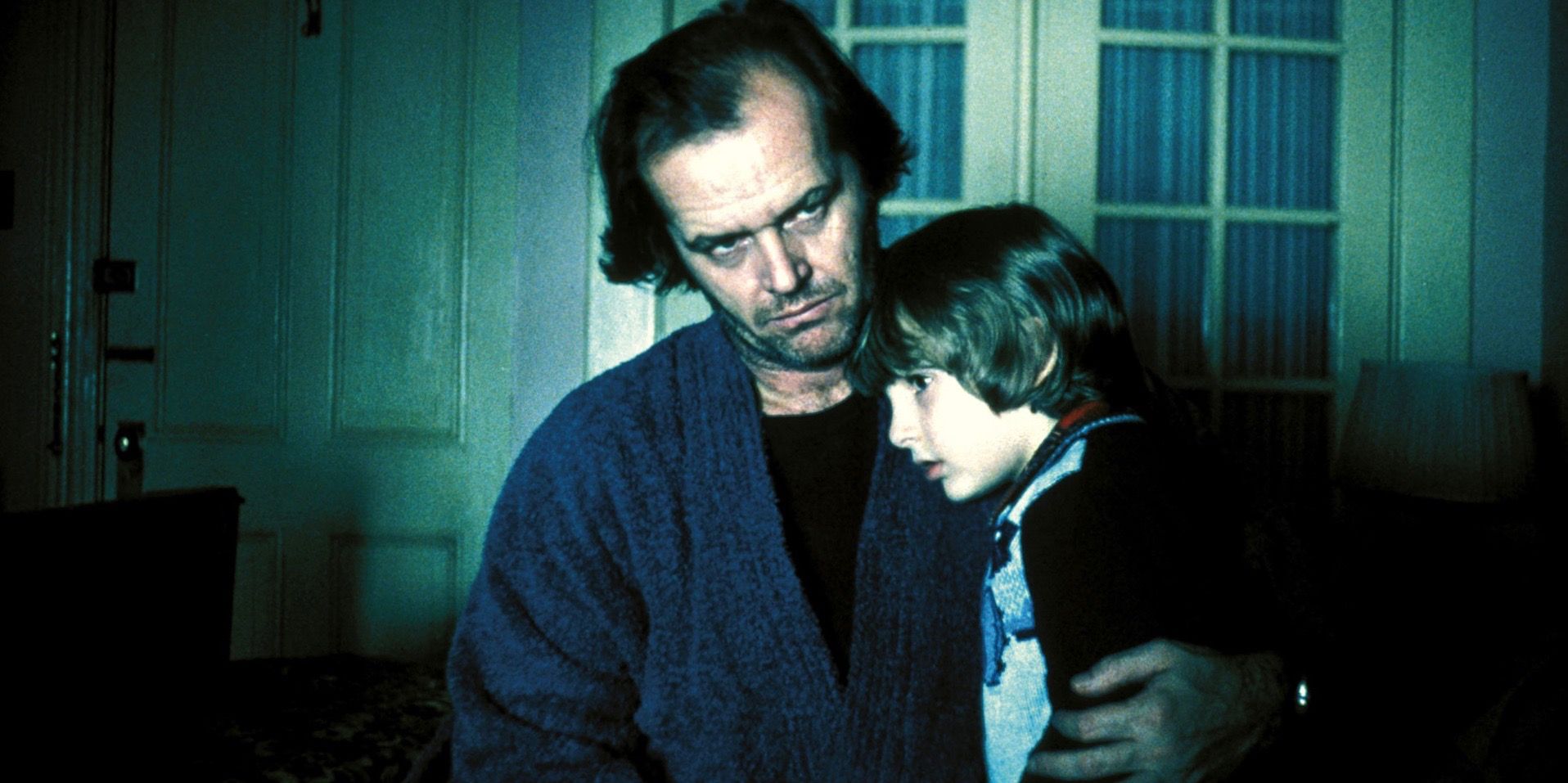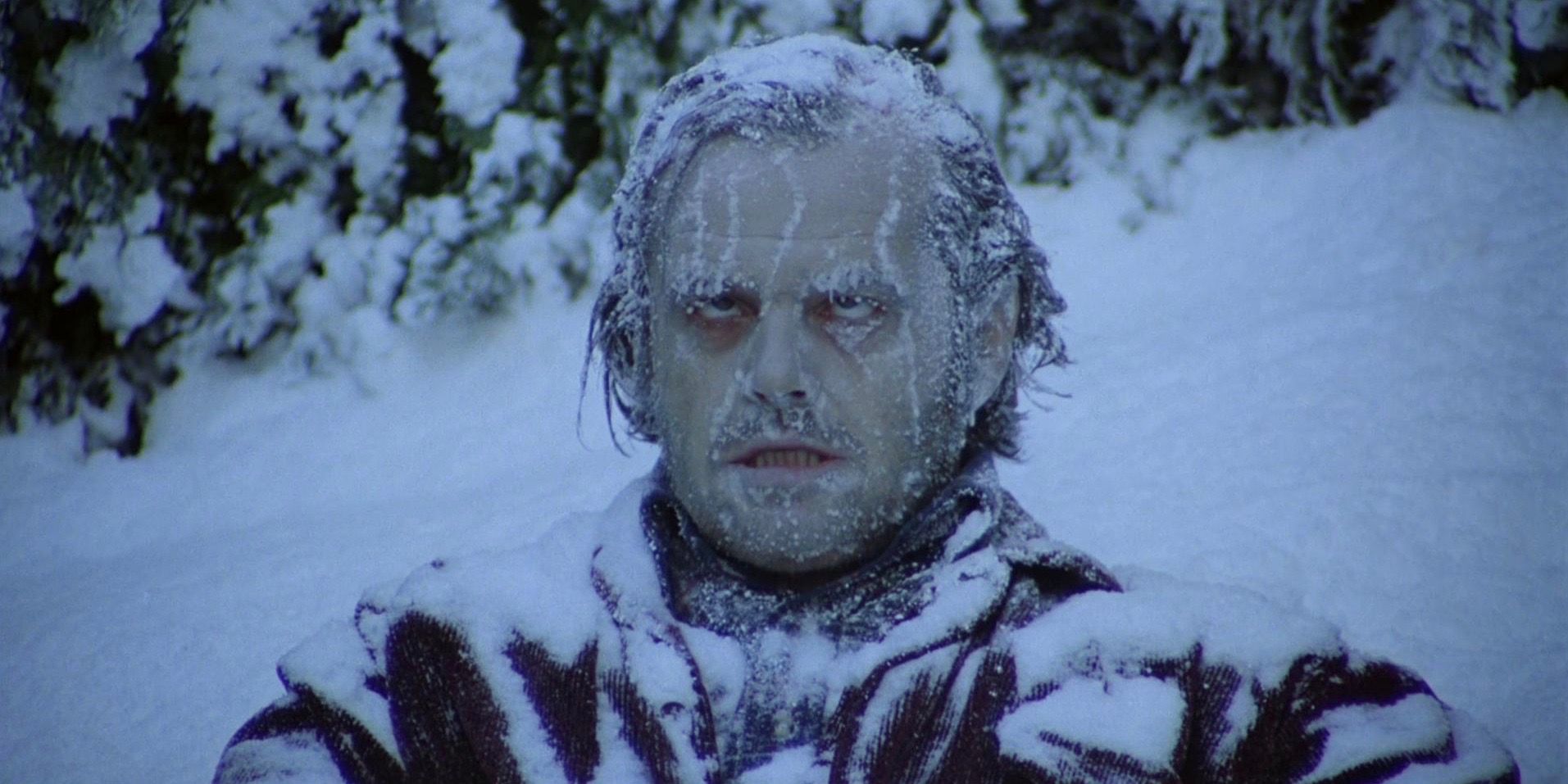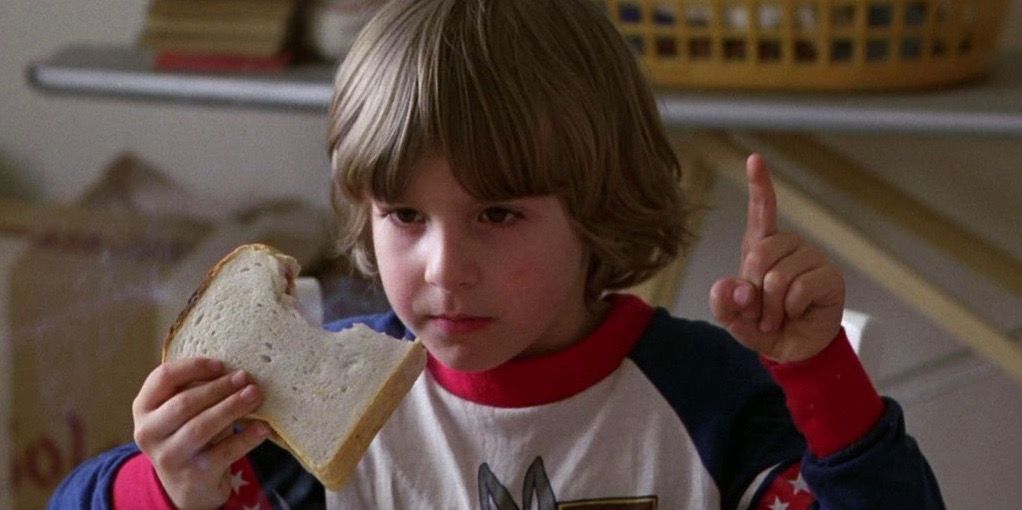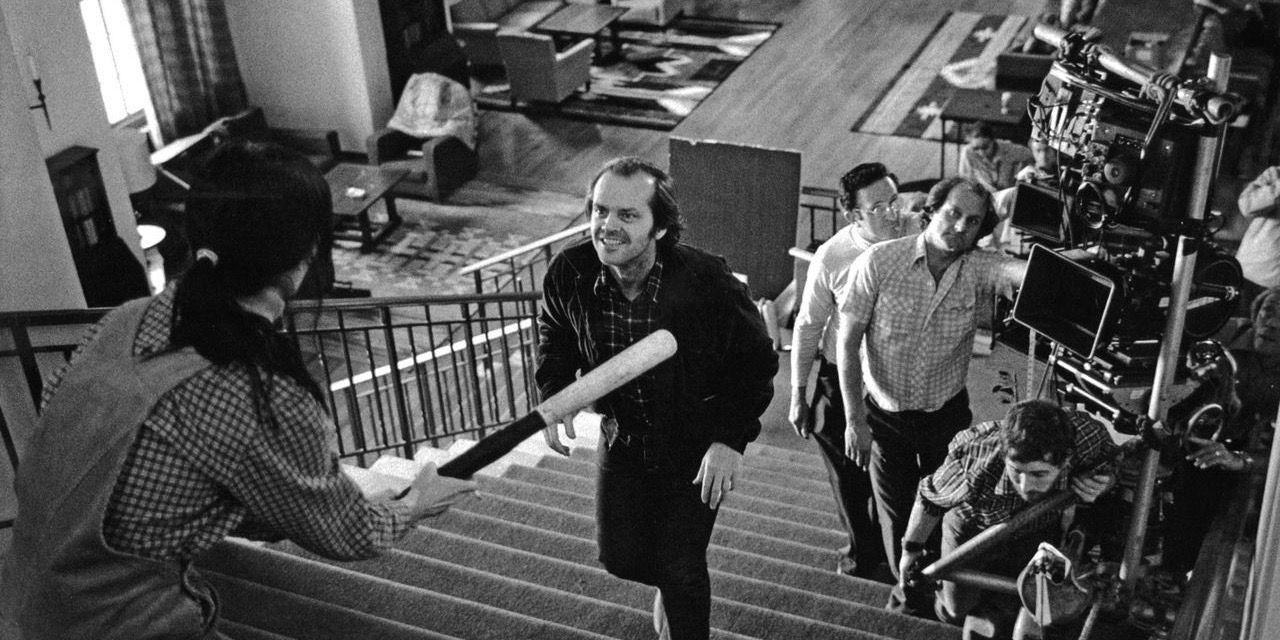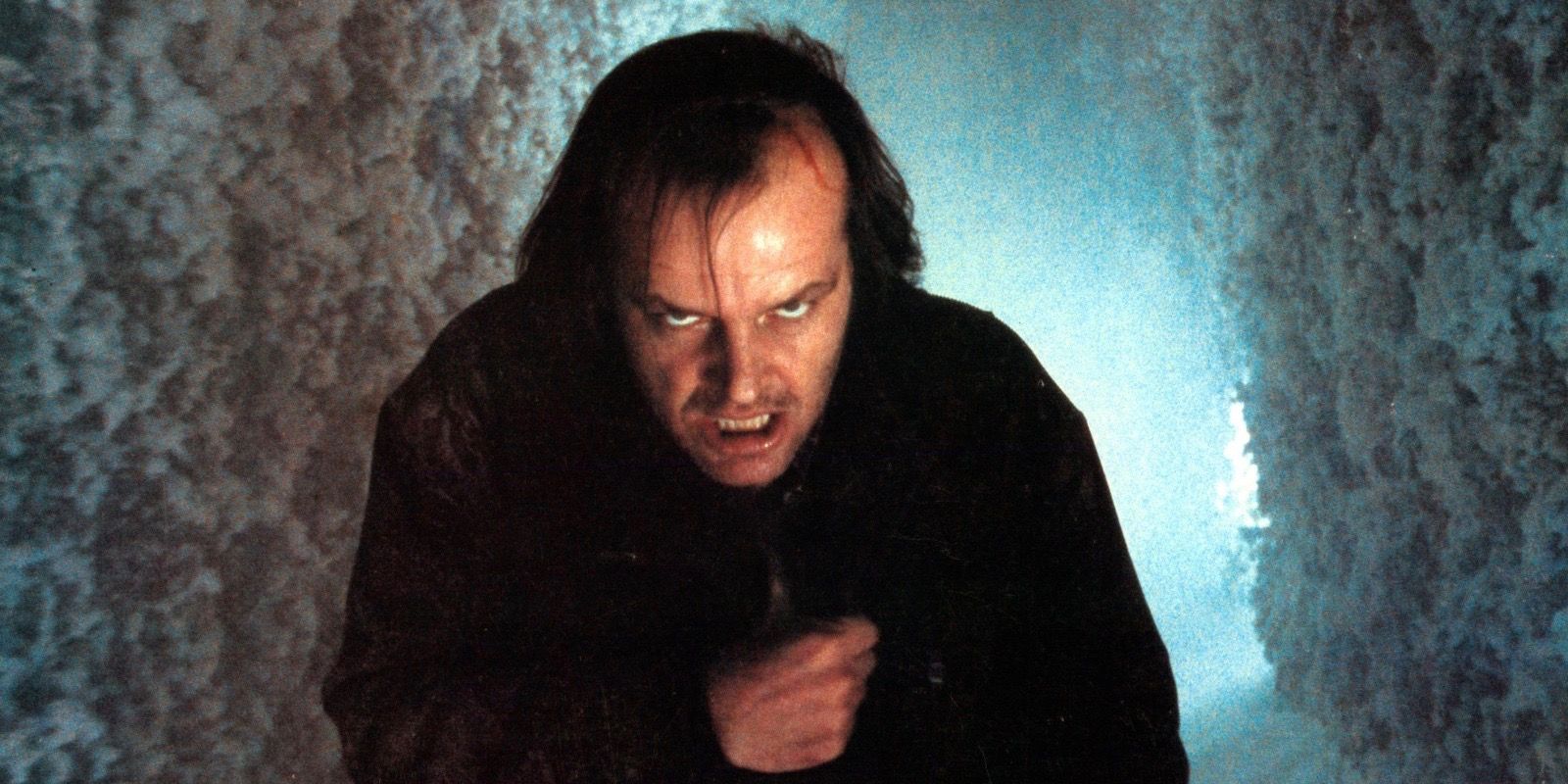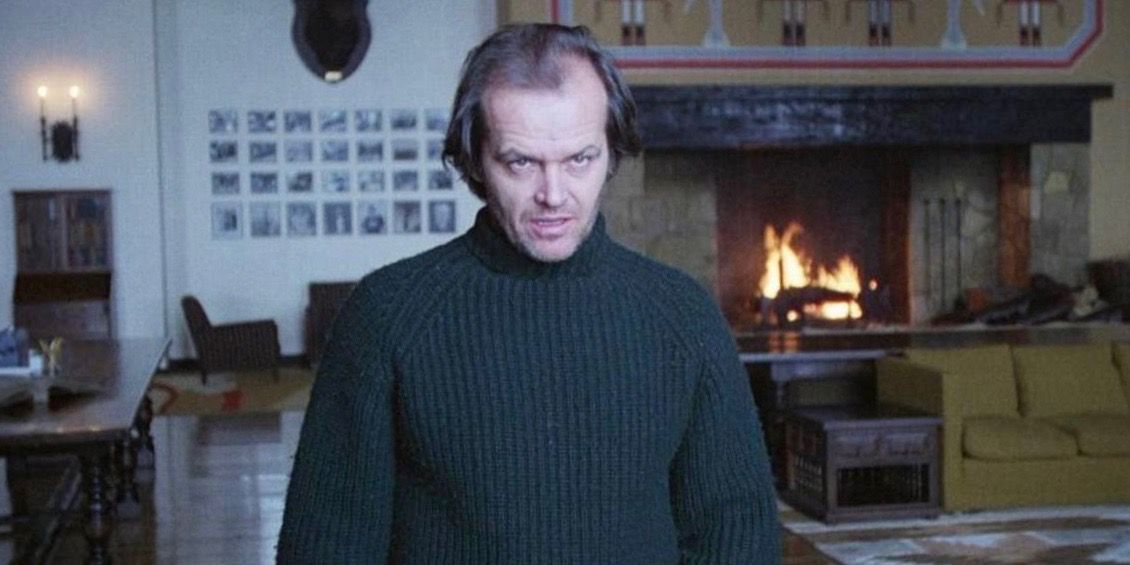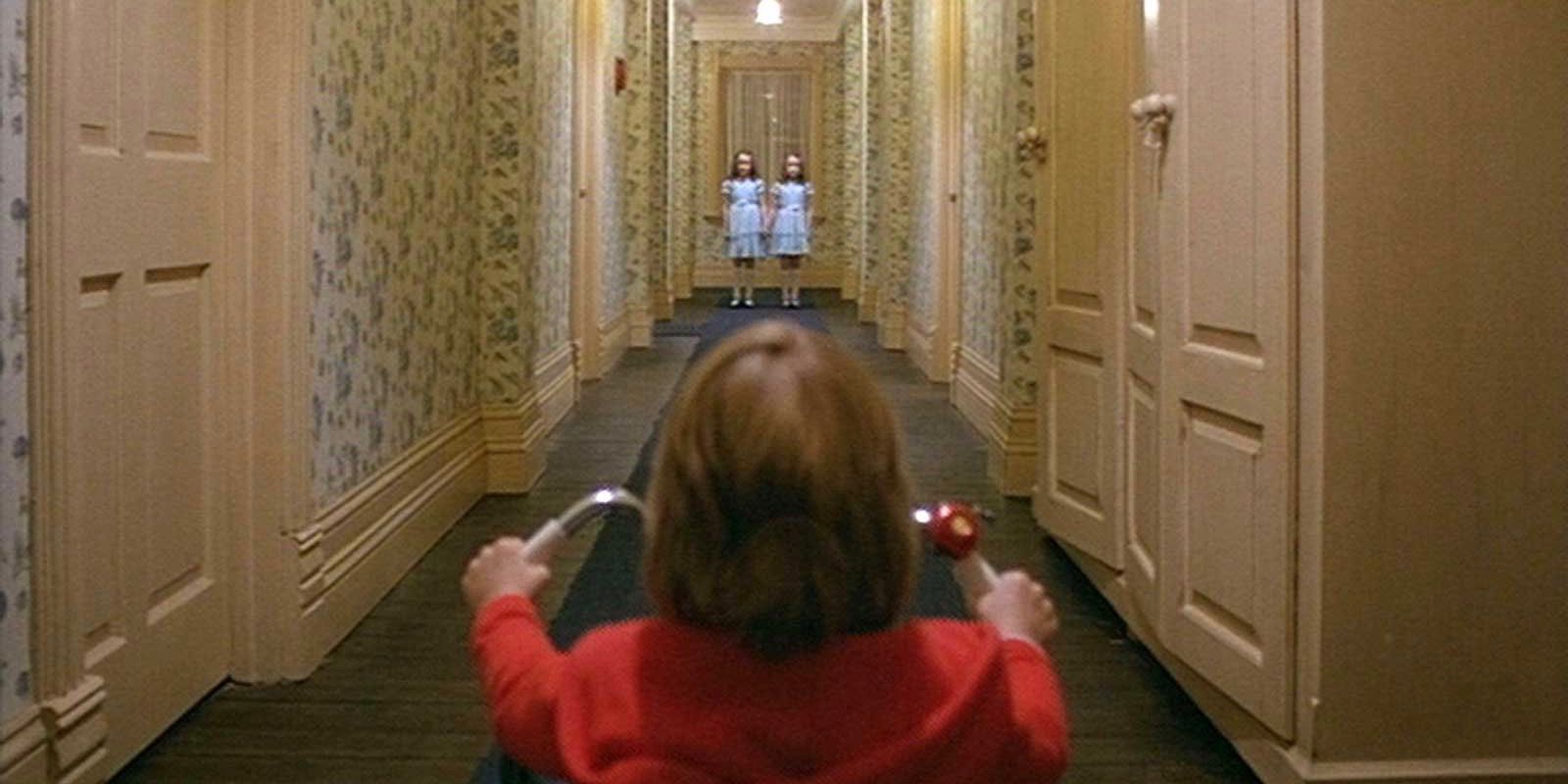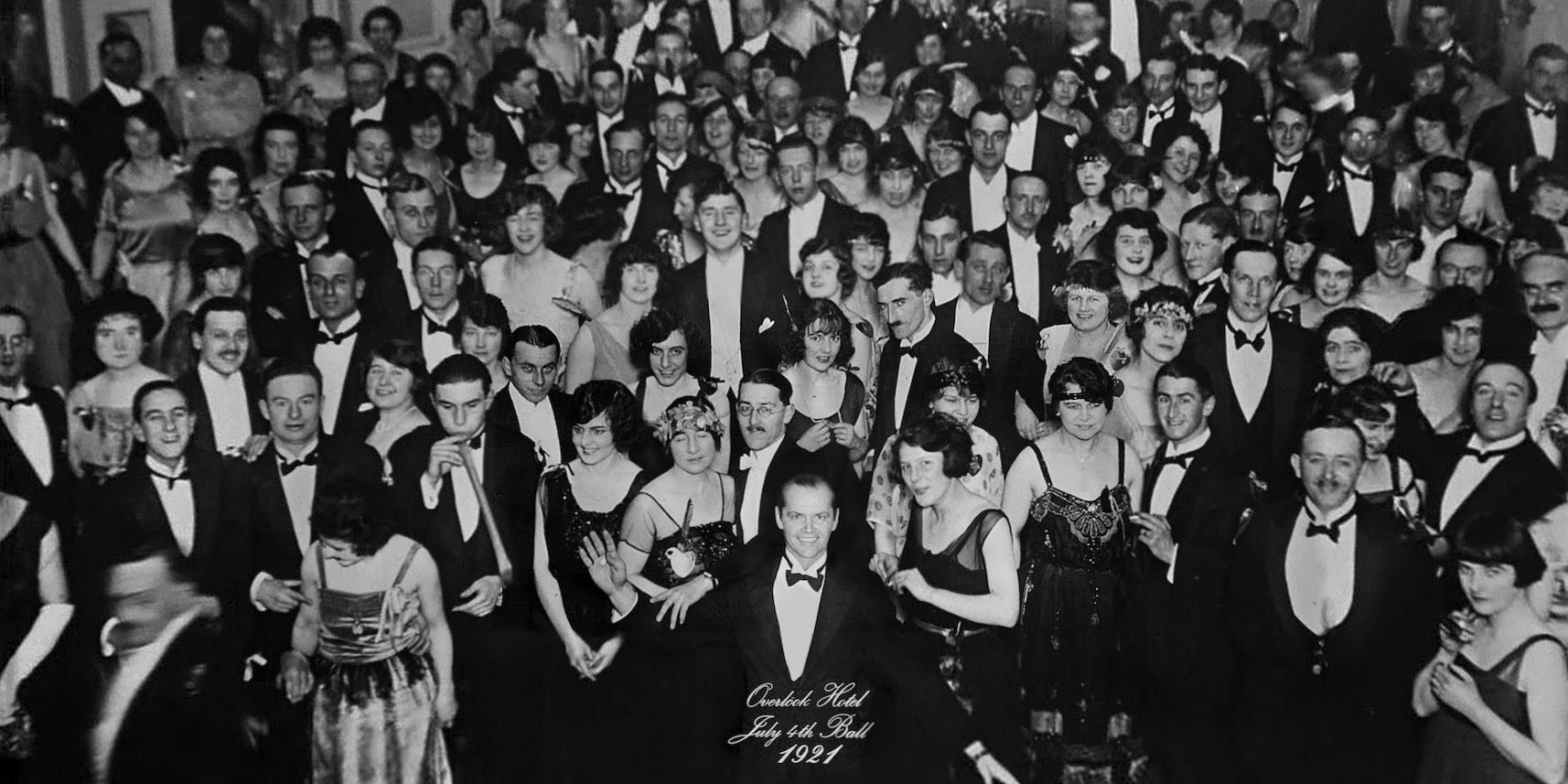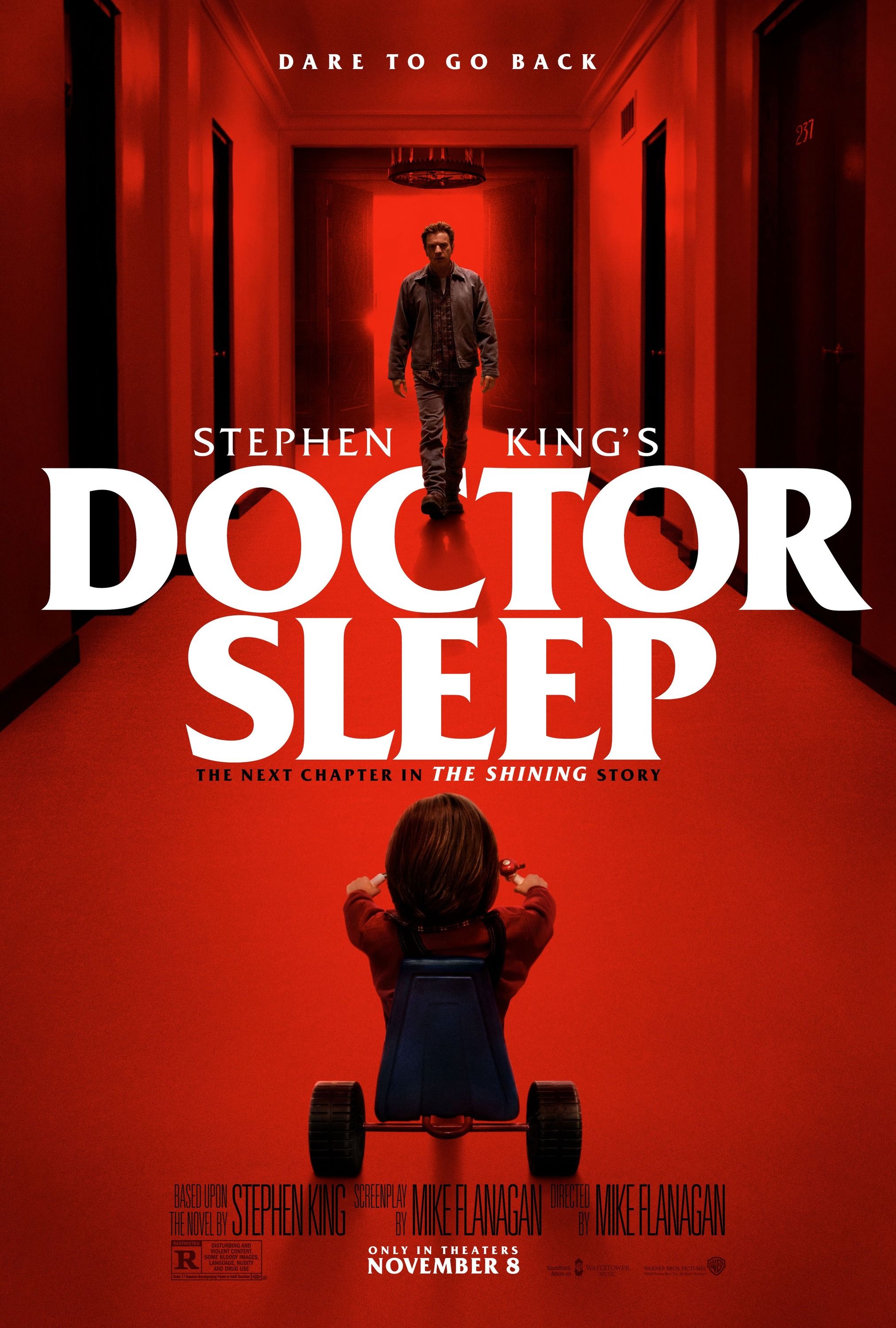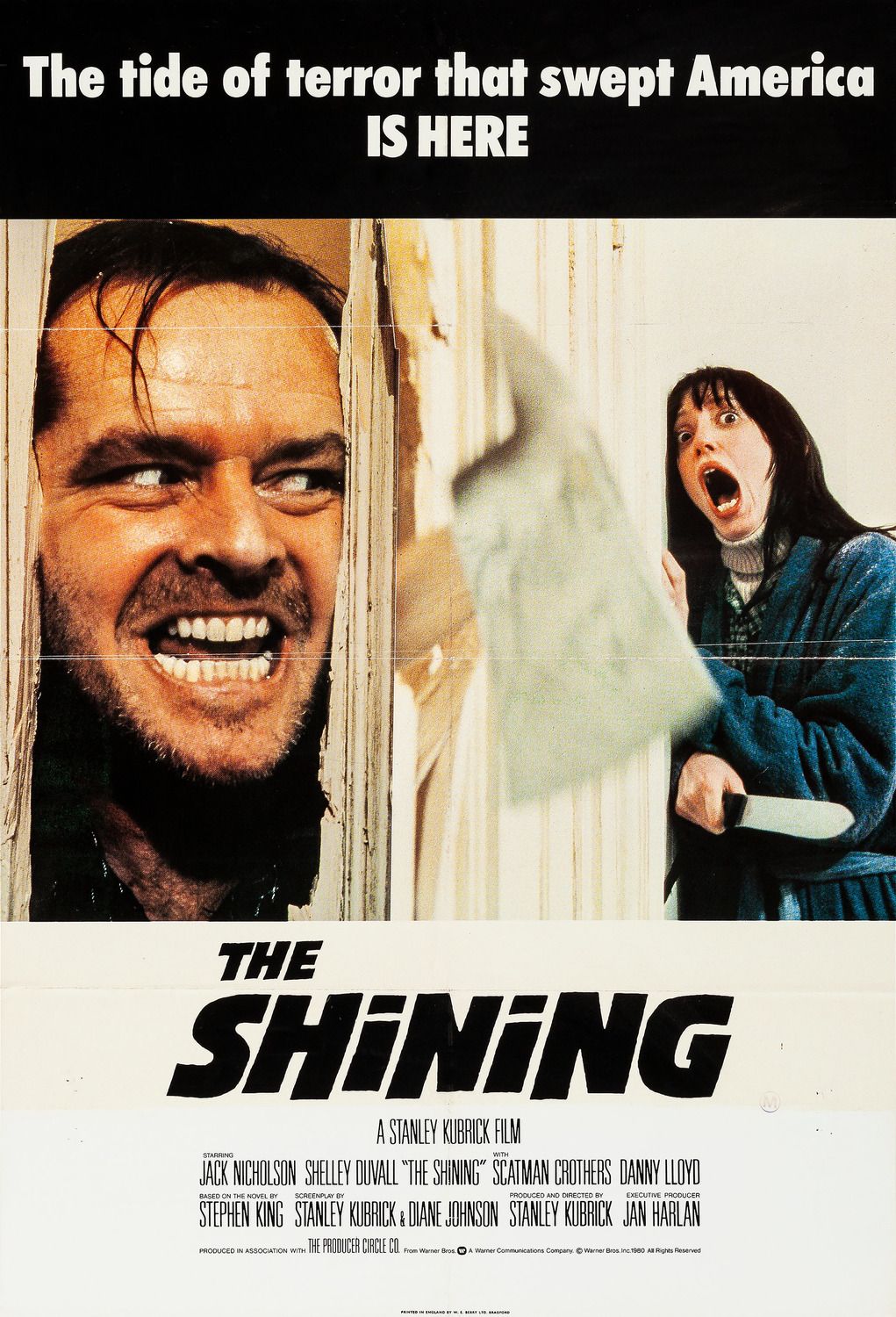When it comes to horror classics, Stanley Kubrick’s The Shining is bound to be mentioned within the first sentence. It’s a creepy, unnerving, deeply engaging cinematic adaptation of Stephen King’s beloved novel. And, while King himself was not a fan of Kubrick’s film, feeling that it failed to capture the spirit of the book (even comparing the difference between the two works to fire and ice), it is a brilliantly crafted movie. It might not be a faithful adaptation of King’s book, but it just might be the finest horror movie of all time on its own merits. Here are 10 Reasons Why The Shining Is The Greatest Horror Movie Ever Made.
Using Fictional Horrors To Explore Real Horrors
Scary things in movies can be split into two categories: fictional, like werewolves and zombies, and real, like death and violence. The Shining uses fictional horrors (the supernatural ghostly presence in the Overlook Hotel) to explore real horrors like murder and child abuse. The real-world horrors are hidden in the subtext. Jack tells a conflicting story to the imaginary bartender about the time he hit Danny, while the more sensual scenes appear as they would in a child’s mind, suggesting a history of further mistreatment. There are some very grim hidden meanings in the movie that make it more truly horrific than any other scary movie.
There's No Fat On Its Bones
Every scene in The Shining needs to be there. It’s not a slim movie with a running time of around two and a half hours, but not a second is wasted by Kubrick’s unscrupulous filmmaking eye. As great as fellow horror classics like Halloween and Rosemary’s Baby might be, they do have scenes that drag on a little bit or don’t necessarily need to be in the final cut. The Shining has nothing like that. This is partly due to the studio cutting down the movie to make it more marketable, but either way, we ended up with a streamlined horror masterpiece that may well be the genre’s finest work.
Beautiful Visual Style
Most horror directors don’t take their movie’s color palette or framing or the sequencing of their shots into consideration, but that’s not Stanley Kubrick’s style. All of his unforgettable haunting imagery, like the elevator doors letting out a tidal wave of blood, is now considered iconographic.
This is a result of Kubrick making The Shining like a real movie, not “just a horror movie.” As soon as a filmmaker rests on the crutch of horror cinema’s low expectations, the movie fails. But Kubrick planned and designed The Shining just like he would any other movie, and the result is a masterwork.
Ominous Score
A horror movie is nothing without a good score. Images alone aren’t as scary without a foreboding soundtrack to create the tense atmosphere and keep viewers on the edge of their seat. That’s exactly what Wendy Carlos and Rachel Elkind did with their score for The Shining. They wrote far more music than what ended up in the final cut because Kubrick had them score dozens of scenes that he didn’t know he was going to exclude, but this gave the composers more time to find the movie’s distinctive sound, and the rewards of that are obvious. The soundtrack also includes some non-original tracks; a bunch of freaky modernist takes on classical music styles.
The Perfect Pace
The pacing of The Shining is slow, which some viewers might find off-putting, but that was the perfect way to tell this story. It’s a movie about an isolated and frustrated man’s sanity slowly slipping away. A fast pace would’ve botched that. A lesser filmmaker would think, wrongly, that the faster a horror movie races through its plot, the better it will be. But Kubrick—just like Ridley Scott working on Alien—realized that the best way to unsettle an audience and tell a spooky story is to eek through the terror at a snail’s pace. Kubrick reels in the audience slowly, and it makes the climax much more effective.
Meticulous Attention to Detail
This was Stanley Kubrick’s M.O. throughout his whole career. Nothing was in his shots that he didn’t want to be there. Every small detail in the set design, the costumes, the actors’ facial expressions, the camera movements – it was all very carefully planned out across reams of notes to achieve Kubrick’s very singular vision for each of his films. The Shining may be a horror movie, but it’s no different. Kubrick gave every cut the same care and thought that he did for 2001 and Barry Lyndon. There’s a lot to unpack in the movie, essentially, which makes it endlessly rewatchable.
It Has Influenced Many Of Today's Great Horror Filmmakers
The Shining is unquestionably one of the most influential horror films ever made, with almost every horror filmmaker working today citing it as one of their inspirations. Many allusions to The Shining’s techniques can be seen in Jordan Peele’s movies, Get Out and particularly Us.
Tim Burton has acknowledged the movie as a visual influence and even referenced it in his Alice in Wonderland movie. Additionally, the movie’s influence can be spotted in the works of Paul Thomas Anderson, David Lynch, and Ben Wheatley. Even Martin Scorsese included The Shining on his list of the scariest movies of all time.
Jack Nicholson's Incredible Performance
The whole cast of The Shining gives terrific performances, from Shelley Duvall’s frightened wife/mother character to the sounds of Scatman Crothers’ soothing voice in his performance as Dick Hallorann. Even Danny Lloyd, who was just eight years old at the time, is captivating in his role. But it’s Jack Nicholson’s portrayal of Jack Torrance’s slow descent into madness that really sells the film. The villain isn’t a masked, machete-wielding serial killer or a horde of zombies. It’s just a guy, so the whole success of the movie rests on Nicholson’s performance, and with only his facial expressions and line delivery, he creates a monster scarier than any amount of makeup or costume design ever could.
It's Wide Open To Interpretation
The Shining isn’t just open to interpretation; it’s way, way open to interpretation. It’s so open to interpretation that, after all this interpreting, we still don’t know what this movie is about. It’s been almost 40 years since The Shining was released, and in that time, countless essays and books have been written about it with the intent of deciphering the meaning, and we still haven’t fully figured out what it all means. That keeps us on edge while we watch it over and over again, because we still can’t ease into it, and because we’re still discovering things we didn’t spot the first hundred times.
It Does An Ambiguous Ending Right
The original cut of The Shining included a hospital scene at the end in which Danny and Wendy are told that Jack’s body was nowhere to be found. This is a typical horror movie ending where the rug is pulled out from under an audience that feels safe and has been done by every hackneyed horror director in the book. Kubrick realized this and had the scene physically removed from all prints after they’d been shipped to theaters, and the result is a much more satisfying ending. It’s still ambiguous, but it’s ambiguous in the best way. Has Jack always been at the Overlook? Was he sucked back in time after he died? Did the whole thing actually take place in Wendy’s head, or Danny’s? It asks way more questions than the standard “The killer is back on the loose” horror ending, and, as a result, it leaves more of an impression. It keeps viewers talking about it on the drive home from the theater and then keeps them up that night. That is effective horror at work.

